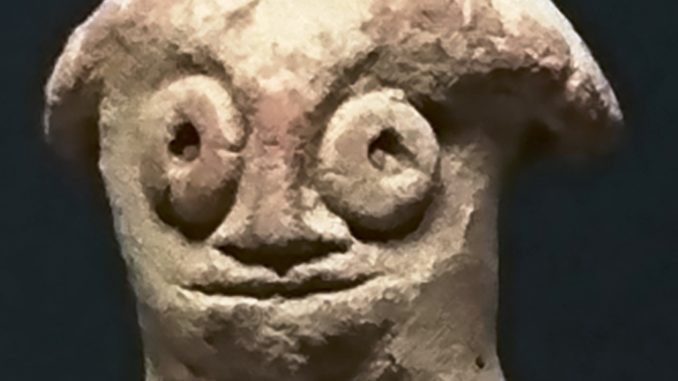
In La Tribune 01 July 2019
Of the last six Chinese Presidents and Prime Ministers, all but one passed an engineer diploma. From 1993-2003 President Jiang Zemin was an electrical engineer as was Prime Minister Zhu Rongji, from 2003-2012 Hu Jintao was a hydroelectric engineer and Wen Jiabao was a geological engineer, since 2012 Xi Jinping has been a process chemical engineer and the exception is Li Keqiang, a lawyer by training.
It is easier to achieve the national objective when you understand its path, and this thematic chronology of Chinese leaders demonstrates this. It is in line with the country’s development strategy: power and coal-fired power plants; hydropower and projection of mining and hydrocarbon companies overseas in Africa, South America, Australia, etc.; process chemistry and agri-food investment.
Business intelligence
Admittedly, the use of economic intelligence, a weapon now widely used by all nations, has been favourable to Beijing in many areas, particularly in Africa and in the Tech sector, but often because we have been naïve. However, what a jubilation it must have been for Beijing to see its three energy, mining and agri-food strategies succeeding, enabling it to extend its industrial empire and influence to the whole world. The latest advance corresponds to unprecedented Chinese progress in wind and solar energy materials, and the next in electric-connected-shared cars and hydrogen buses and trucks.
Without China, this next mobility revolution would not be possible, and no matter what source of electricity is currently used to charge the battery and make hydrogen, because in the future it will be carbon-free, as is already the case in France. In the end, under certain conditions, these two mobilities will be the two most painless solutions for the planet, and yet they are being fought. In the same way that under storms insects hatch, under this mobility revolution creeping impostures hatched and try to transform Chinese industrial epic into anti-Beijing fake-news. They accuse China of having brazenly fought for metals, on the one hand, and on the other hand, with its slogan “green car, red battery”, they tackle its hegemony in the connected electric car. As often, built by ignorance and emotion, these two fake-news reinforce beliefs, demand fame, court lobbies and creep into brains identical to nests of absent birds.
Who gave China an advance of 20 years
China is big enough to defend itself on its own, but let us try to get a clearer picture. Truth being always more complex and constraining than a hoax, it will be reveal by questioning the fake-news. If there really was such a war with China, why didn’t the United States help an American mining company forced to sell the world’s largest cobalt mine in DRC in Africa to a Chinese company? If there was a war between China and the West, why didn’t Washington or Europe fight when a Chinese company bought from a Canadian company its shares in SQM, the Chilean world leader in lithium? Since rare earths (lanthanide) are not rare, was the United States so powerless to finance a $500 million war effort to build a rare earth industry from the dozen or so deposits in its subsoil; why should we know more about the mineral composition of the moon’s surface than the presence in our own subsoils of minerals essential for electric vehicles, is it Beijing that is hindering exploration of our territories? Why leave China free to invest in so many strategic mines in Africa and South America? Why let China take 20 years in advance in the electric car and now in hydrogen as in the two cities of Foshan and Yunfu?
The same reason, geology
Let’s go further into the question, which also accuses China of having eliminated its competitors in metals. Chile is the world’s largest copper producer, not because it has exhausted rivals, but because its subsoil contains a lot of copper. The same applies to Indonesia, the Philippines, Russia and Canada with nickel, the DRC and cobalt, the Andean triangle and Australia with lithium, South Africa and Russia for platinum and palladium, Australia and Brazil in iron ore and Guinea with bauxite. All these countries excel in their metals not because they have sought to eliminate competitors, but simply because they have rich mineral resources. China is strong in lanthanides, lithium, tungsten and other metals, not because it destroyed opponents during an imaginary metal conflagration, but for the same reason: geology. It has rich deposits; it has exploited and transformed them downstream in its industries, particularly for electric cars and hydrogen-powered buses and trucks.
Last point. A list of critical metals is neither a war prize, nor a weapon, nor an offensive, but the author confessions of weakness, an a surrender with no fight. If there had been such a conflict, which countries fought for these lists against China, where is the battlefield, where are the generals, weapons and armies? What was the war treasure, what was the loot? No answer, the fake-news remains silent and cloistered, its “panurgic” pilgrims cheated. No country has fought, no one has opposed, the imposture is a decoy, an anti-Chinese hoax.
Beijing has a Natural Resources Doctrine
In the end, the truth is clear: over the past 40 years, China, thanks to the education of its leaders, has developed a Natural Resources Doctrine and made considerable efforts in energy, metals and agri-food to ensure its development, lower its manufacturing costs and built products that are accessible to its population, including those of renewable energies and new mobility. In addition, it has now implemented an industrial policy to protect its environment. This freed progression takes fake-news back to their origins, hoax. It also reminds us the cruel absences and vacuities of our own Natural Resources Doctrine and to an outrage: their industrial widowhood.